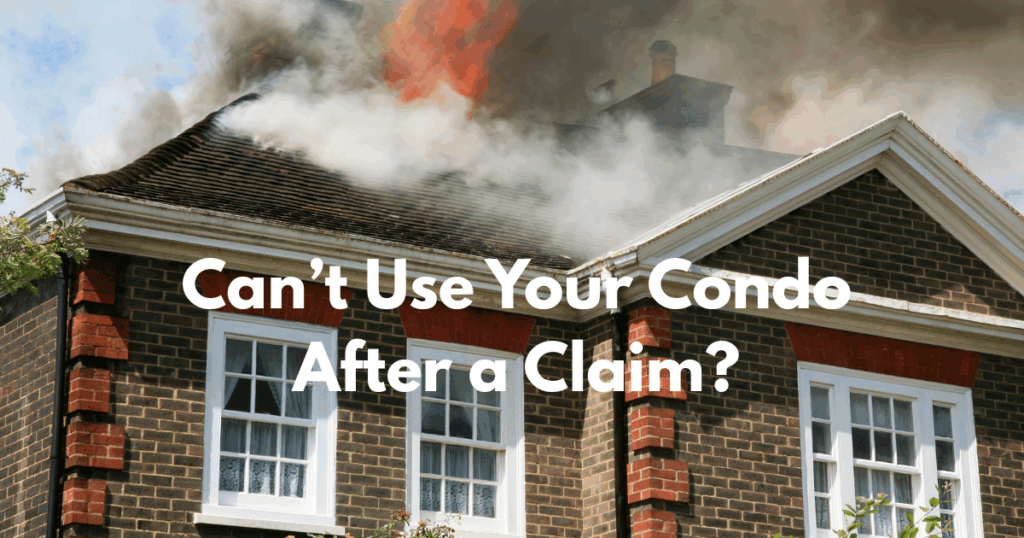
If your condo became unlivable after a fire or water disaster, could you afford to live elsewhere while it’s being repaired?
Have you checked whether your condo insurance includes enough “loss of use” coverage to pay for temporary housing and other extra expenses?
Many Massachusetts condo owners are surprised at how little coverage they actually have when they file a claim.
In this article, we’ll explain how loss of use coverage works in a standard HO6 condo insurance policy, show you how to calculate your actual limits, and help you decide if you need to make changes before a loss happens.
Section 1: What Is an HO6 Condominium Insurance Policy?
An HO6 policy is a personal condo insurance policy that covers:
- Your personal property (furniture, electronics, clothing, etc.)
- Interior unit upgrades (like cabinets, flooring, appliances not covered by the condo association)
- Personal liability
- Loss of use—the focus of this article
Your condo association’s master insurance policy covers the structure and common areas—but not your belongings or your temporary living expenses.
Section 2: What Does “Loss of Use” Coverage Mean in an HO6 Policy?
Loss of use (also called Additional Living Expenses or ALE) helps pay for the cost of:
- Rent for a temporary home
- Utilities (heat, electricity, water)
- Laundry or meals if your temporary housing lacks those amenities
- Other necessary costs that go above and beyond your normal living expenses
💡 In Massachusetts, most HO6 policies calculate this coverage as a percentage of your personal property limit.
Section 3: How to Calculate Your Actual Loss of Use Limit
Let’s break it down with a real-world example:
📌 If your policy has:
- Personal property limit: $25,000
- Loss of use limit: 30%
👉 Then your maximum ALE payout is $7,500
Now ask yourself:
- Would $7,500 cover 3–6 months of rent, utilities, and other added costs in your area?
- Could you afford temporary housing while still paying your mortgage, condo fees, and taxes?
In many major Massachusetts cities and towns, temporary housing alone could easily run $2,500–$3,500 per month.
Section 4: What Your Condo Association’s Policy Doesn’t Cover
A major misconception is thinking the condo association’s master policy will step in.
🚫 It won’t cover:
- Your personal belongings
- Your hotel or apartment costs
- Your temporary utilities or meals
- Any loss of use expenses whatsoever
That’s why your HO6 policy is essential—and why having enough coverage matters more than ever.
Section 5: What You Can Do to Avoid Financial Stress at Claim Time
Here are 3 steps you should take today:
- ✅ Review your HO6 policy
Look for the Loss of Use or ALE section and see the current coverage percentage. - ✅ Do the math
Calculate whether the actual dollar amount would cover 3–6 months of temporary living costs. - ✅ Talk to your independent insurance broker
You can often increase your personal property coverage (which boosts your ALE automatically) for a very reasonable cost.
Prepare Now—So You’re Not Scrambling Later
If your condo was damaged in a major loss, you’d likely have to move out for months—and continue paying your mortgage, condo fees, and taxes. Would your current HO6 policy cover the costs of temporary housing?
Now that you understand how Loss of Use coverage works—and how it’s calculated—you can take action before a disaster hits.
📞 Call Vargas & Vargas Insurance client, call us at 617-298-0655 to review your current coverage.












